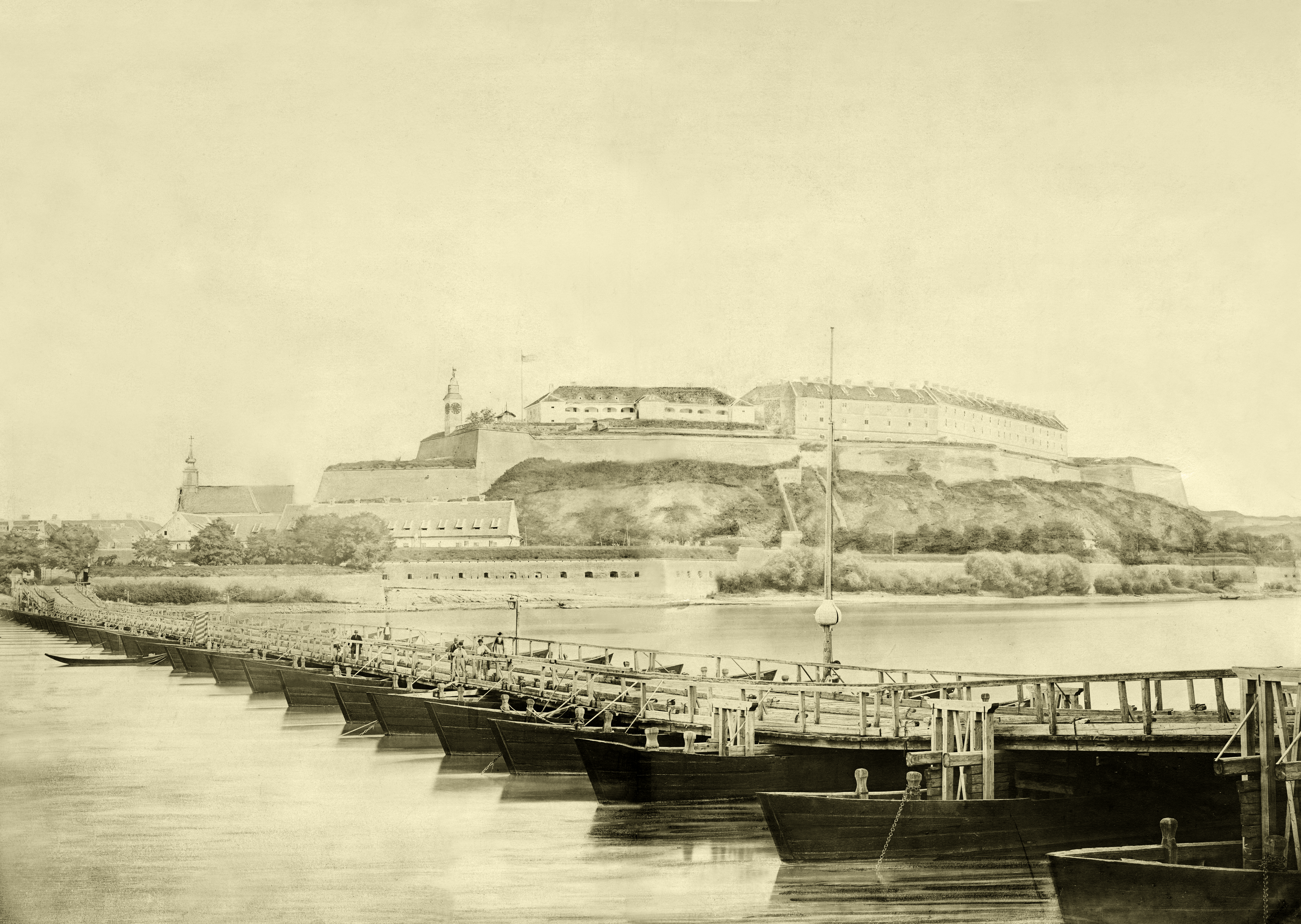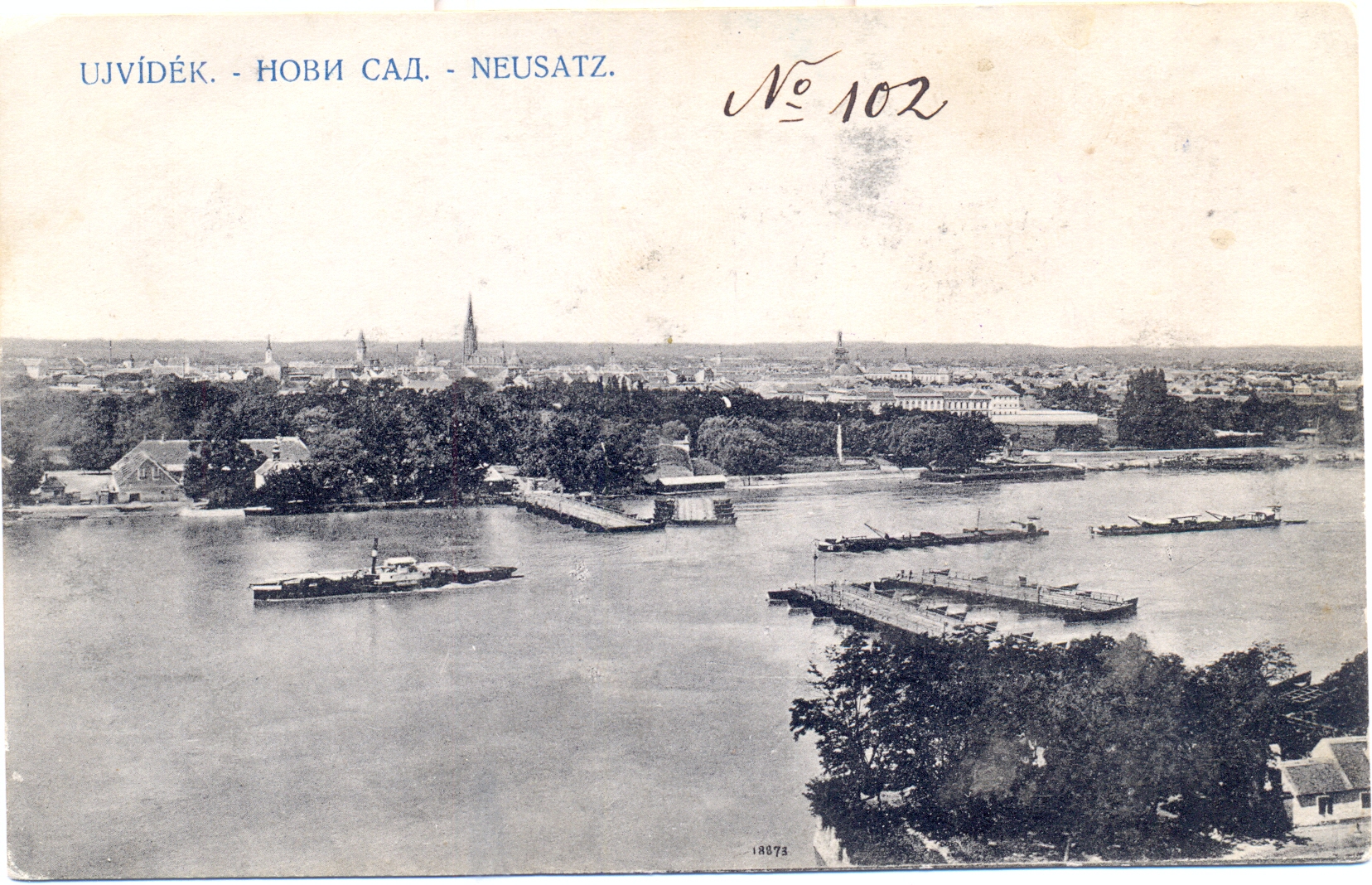One of the landmarks of Novi Sad that no longer exists, built for military-strategic and defensive purposes, has significantly contributed to the development of the city and has also enriched the lives of its population in many different and unexpected ways. This is a story about the bridgehead.
Bridgehead was a fortification with ramparts and gates facing the city and a flat base towards the Danube. Its task was to protect and defend the crossing over the Danube by a pontoon bridge, and at the same time to be a fortification protection at the approach to the Petrovaradin Fortress.
The beginning of the construction of Novi Sad is considered to be the end of the 17th century, more precisely the year 1694, when Bruckschanc, which belonged to the fortification unit of the Fortress, was built. The defense of the Fortress on the left bank of the Danube depended on the fortification guarding the bridge – hence the name bridgehead. It can be seen on all the old drawings and engravings that the Fortress, the Danube and the bridgehead formed one whole, whose way of building was the same.
Immediately after the construction of the bridge, craftsmen and merchants who accompanied the Serbian police, army troops, blacksmiths, innkeepers, bakers, butchers, tailors and others settled around it. They build houses on the first and nearest hills along the bridgehead. That is how the Petrovaradinski Šanac, or only Šanac, was created, the beginning of the later Novi Sad, from those few streets and alleys around the Orthodox Cathedral. In the diametre of 500 metres around the bridge, it was not allowed to build any buildings without the approval of the military authorities. Two companies of hussars and one company of hajduks were staying inside the bridge.

Walks on the bridgehead
In the past, the people of Novi Sad used to call the bridgehead Bruckschanc. There was no Novi Sad resident who did not pass through it, either by car or on foot, to cross the pontoon bridge to Srem or to take a boat to Kamenica, and a so-called ‘Hungarian’ boat to any place along the Danube near Vukovar. There was a nice walk around the bridgehead because the outside of the ditches was planted with a row of poplars and acacias, and the extended path with benches provided ideal shade during the summer heat.
Mostly, the people of Novi Sad loved the afternoon walks and this habit developed with the adoption of manners. The favourite promenades were first Futoška Šuma, Vladičanski Vrt in Kisačka Street, Trandžament, Kamenički Park, and then Bruckschanc. The famous promenade of the people of Novi Sad, the so-called Promenade, went from the end of Dunavska Street along the coast to Bruckschanc and the steamship station. Canadian poplars have been planted there, stands for sweets and drinks have been placed, in 1889 the Queen of England tavern was opened, and the Danube Park was being arranged. Later, in the thirties of the 20th century, the promenade was moved to the very centre of the city, where the elderly walked along the left side of the Main Square and along King Alexander Street, while students and pupils walked on the opposite side. Down through Gospodska Street (today’s Zmaj Jovina Street) towards Dunavska Street, where there was a market before noon, soldiers and journeymen paraded with piroška and other maids, not caring much about the class division into the lordly and suburban Novi Sad.
A stone road for cars and an alley for pedestrians passed through the middle of the bridgehead. The passage was free, and there were training sites on both sides of the road, so passers-by could watch non-commissioned officers performing military training in German. This was especially interesting when the recruits from Srem would out of fun pretend to be clumsy in order to challenge their instructors, who would shout because of that. Back then, it was called ‘shaping’ the soldiers. Strict discipline reigned in the two barracks in the bridgehead, but sometimes a tamboura and the melodic singing of the Srem soldiers could be heard.
Pontoon bridge attraction
One particularly interesting attraction from Novi Sad was connected to the bridgehead. Citizens came here to observe the crossing of ships over the pontoon bridge that was set up there even during the time of the Turks, so the Austrian military authorities also built one. This bridge was built in 1760 and was constantly being renovated. It was a powerful construction, the largest pontoon bridge in that part of the Empire, composed of 32 pontoons 40 meters long and 8 to 10 meters wide. The bridge, with a slatted fence on both sides, was so wide that two cars could pass, and there was a special lane for pedestrians.
It was possible to cross the bridge day and night, but this was often interrupted due to ship traffic, which used to be very developed and alive on the Danube. From early spring until winter, until the icebergs set off, a large number of steamships sailed carrying passengers and goods, from Ulm in Germany all the way to Brăila at the confluence of the Danube into the Black Sea. Upstream, ships mainly carried food to Austria and Germany, and downstream, industrial goods were transported from those countries to the Balkan countries.
As soon as an observer at the Petrovaradin Fortress noticed the ship downstream near Čerević or upstream near Tekija, he would immediately ring the bell to announce the arrival of the ships. And indeed, at the first bell, ‘hajoši (Eng. boatmen) would appear on the bridge to take their places on the pontoons. The first ringing of the bell was also a sign to those who want to cross the bridge that they should hurry because after the second bell, the entrance to the bridge was closed. On the third bell from the middle of the bridge, eight pontoons on each side would stand out downstream. On each wing, the hajoši used unwinding wheels to unwind huge iron chains towards the bridge, and on the other side, they pulled the chains towards the shores again. All this was done ably and quickly, so that the bridge was always open on time and the ships passed unhindered.
It was customary for the audience to greet the ship from the shore by waving their hand, hat or handkerchief, and the ship greeted them with a whistle. A real competition developed in who saw and remembered more ships, so the students wrote down the name of the steamboat, the number of its chimneys, the number of its stars and other markings in the notebooks.

When the icebergs stopped going along the Danube, pontoons would be pulled from the winter quarters immediately, and the bridge was set up in early spring, so its opening every year was a small ceremony. On that occasion, children and high school students would rush to buy splinters on the bridge, called ‘navala’, because that would supposedly bring luck in their wallets. Even if ‘navala’ did not fulfil the beliefs and expectations, the opening of the bridge symbolized the beginning of spring and the facilitation of traffic between Novi Sad and Srem, as well as the opening of the season of walks over the bridge and around Petrovaradin.
Demolition of the bridgehead
The Novi Sad Magistrate tried to remove Bruckschanc, but the fortification remained between the city and the Danube until the 1920s. The fortress that actually served as a bridgehead was located on today’s Quay of the Victims of the Raid, between Dunavska and Radnička streets. The bridgehead was then seen as an obstacle to the natural development of Novi Sad and its access to the river.
On 1 December, 1923, the city of Novi Sad signed an agreement with the representatives of the army of the Kingdom of Serbs, Croats and Slovenes on the transfer of the bridgehead to the city. The bridgehead lost all military-strategic role and value, and was demolished the same year. The terrain where it was located was levelled for the construction of the bridge of Prince Tomislav, which was completed and opened to traffic on 2 May, 1928. Until the construction of the embankment after the great flood of the Danube in 1965, the remains of the ramparts and the gate of the former bridgehead, at the end of today’s Radnička Street, were visible.
On the Danube quay, below the Monument to the Victims of the Raid, along the shore, stands the still visible remnant of the Bridgehead – a small tower (a round stone pillar with a rounded top), the rest of the batardo. This stone pillar, built in 1831, was used to measure the water level at the pier. It is today the only remnant of the former Bridgehead. Legend has it that there was a secret tunnel under the Danube, which could be entered behind the altar of the church of St. George in Petrovaradin and reach the church of St. John of Nepomuk on the Bridgehead, on the Novi Sad side. This tunnel was not found during the demolition.
Author: Ljiljana Dragosavljević Savin, MA, historian
Photo: Museum of Vojvodina







